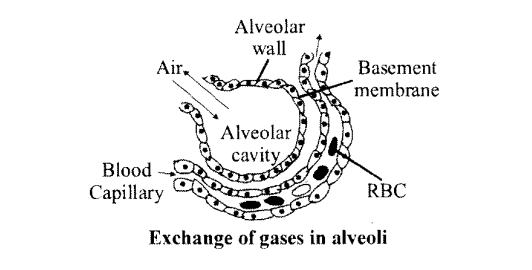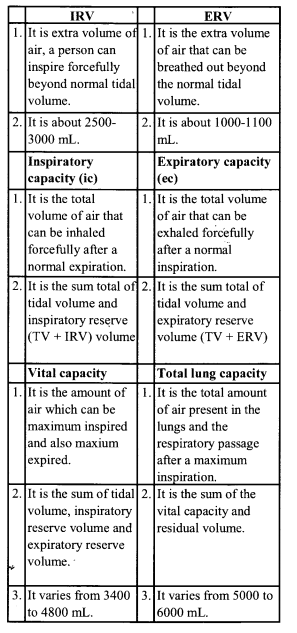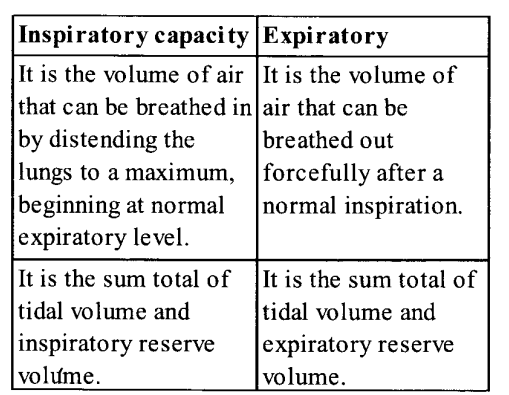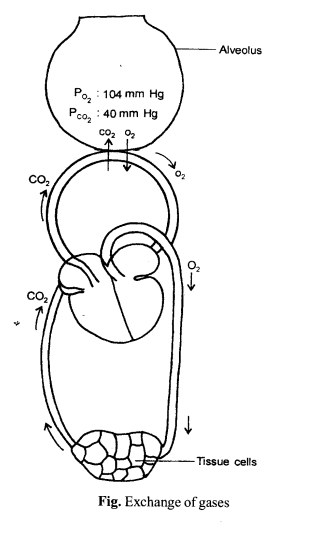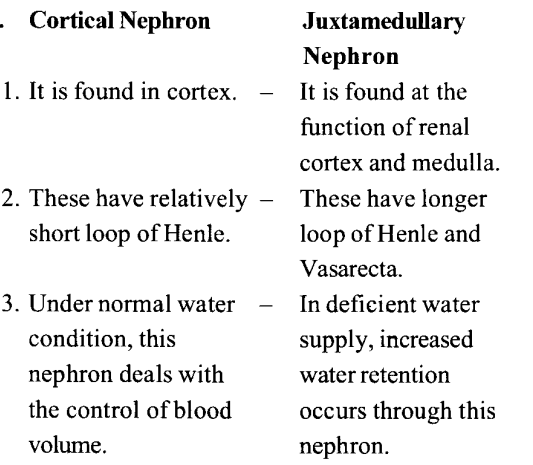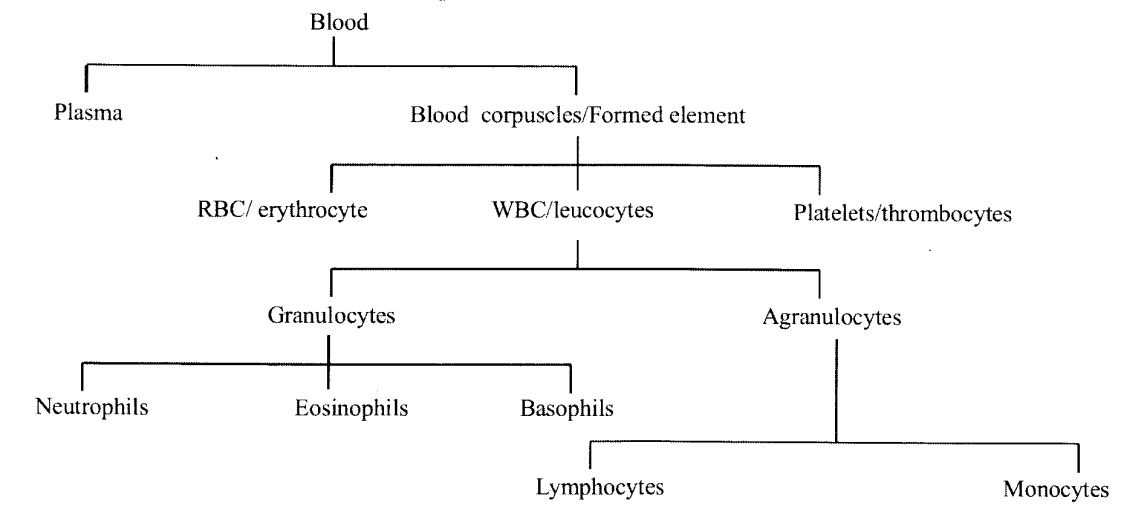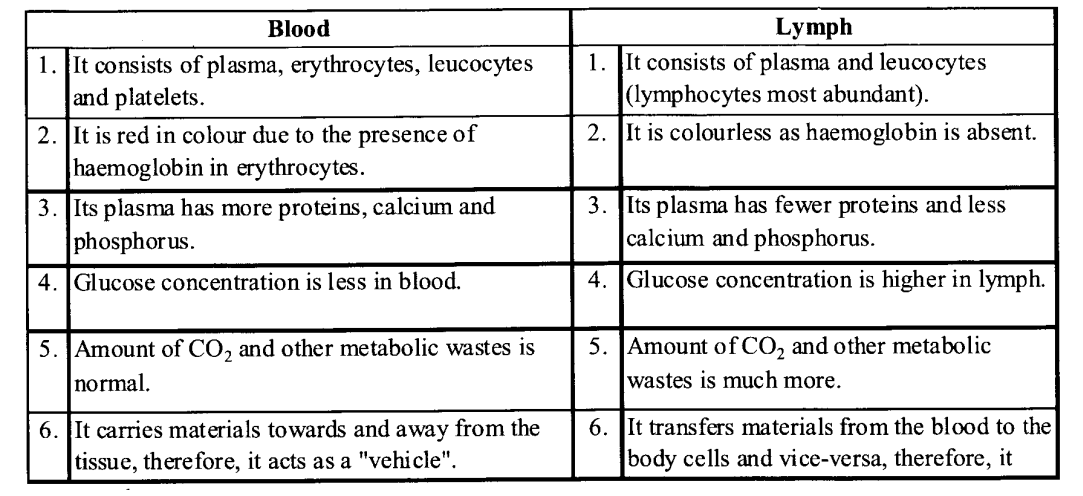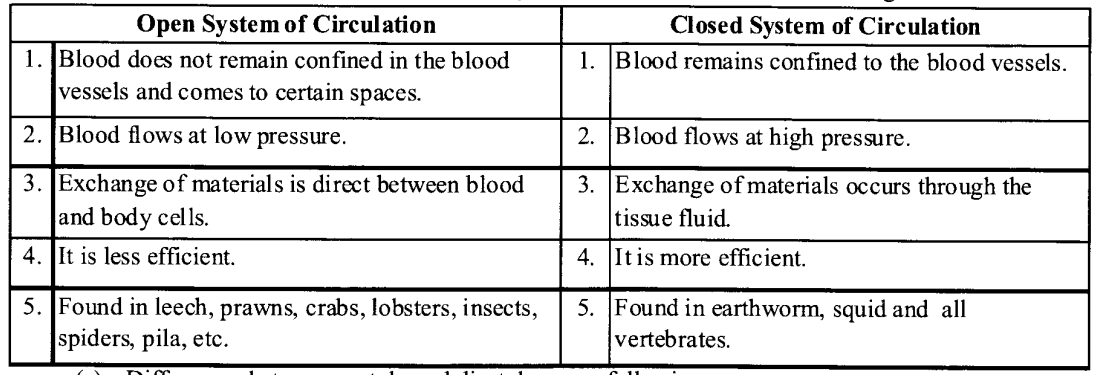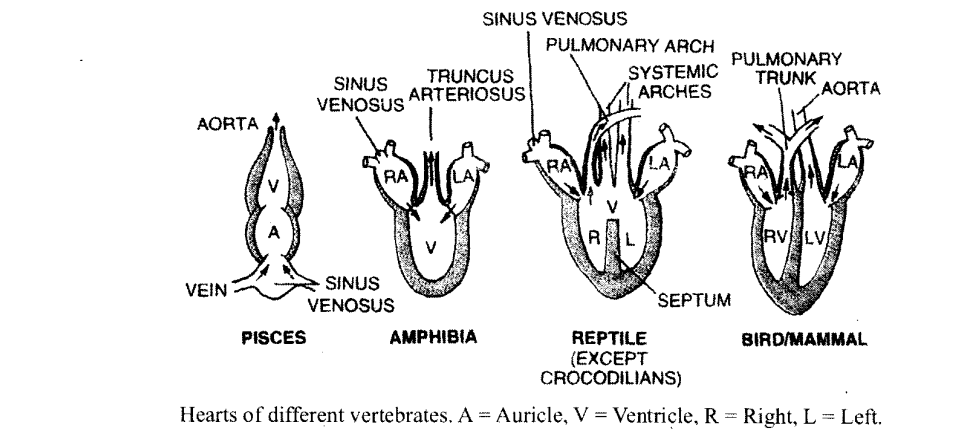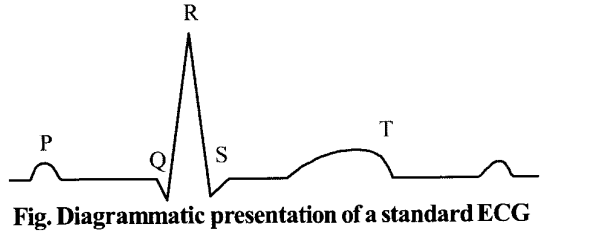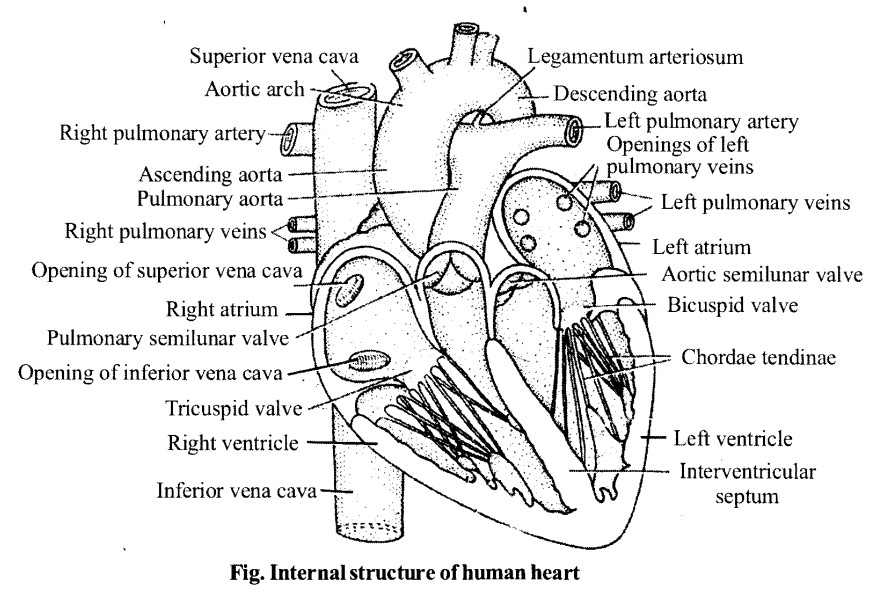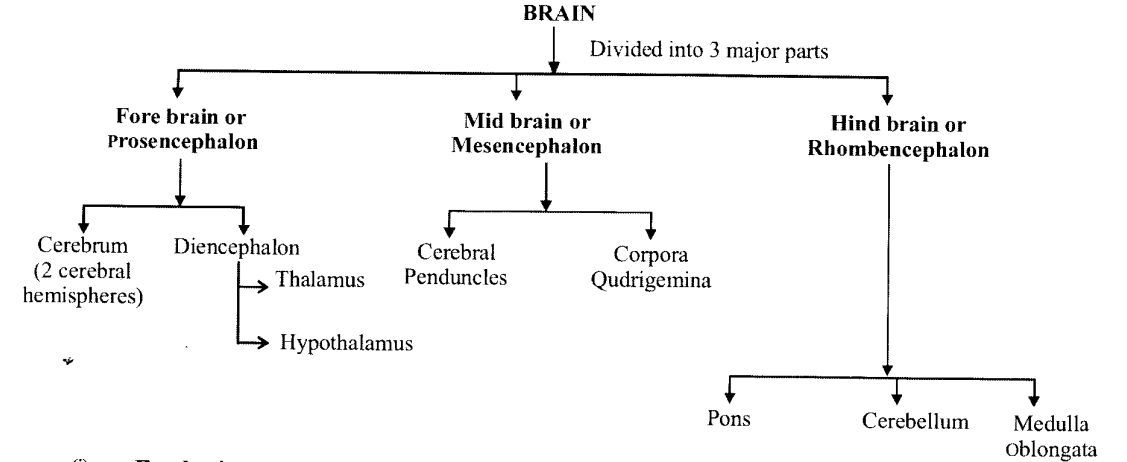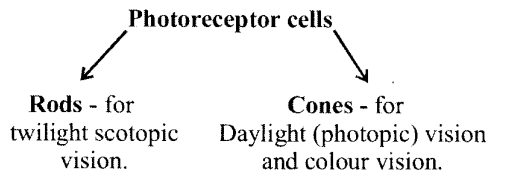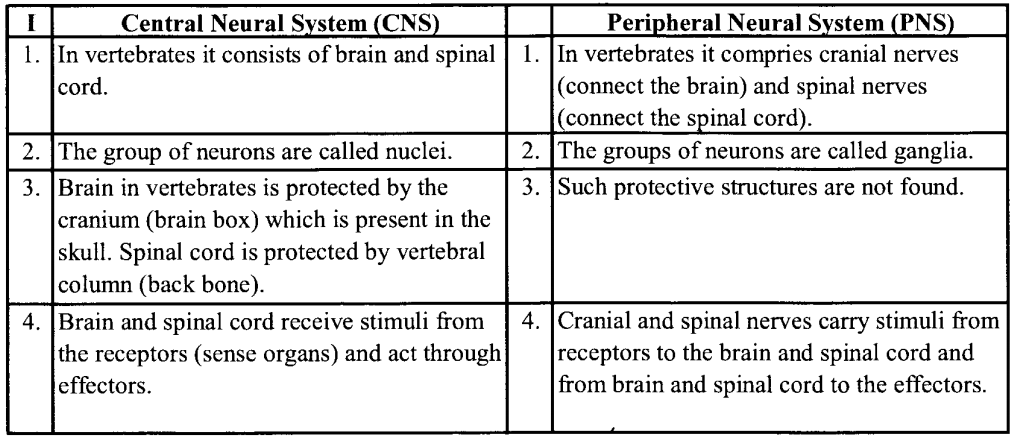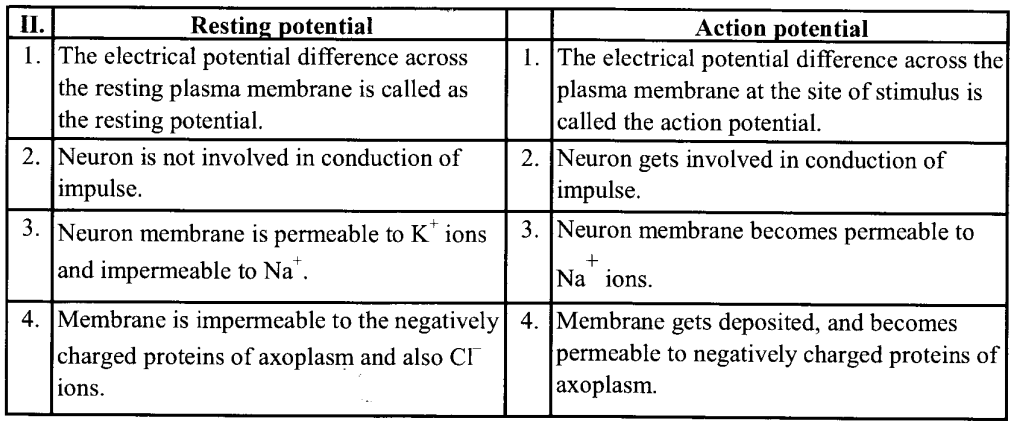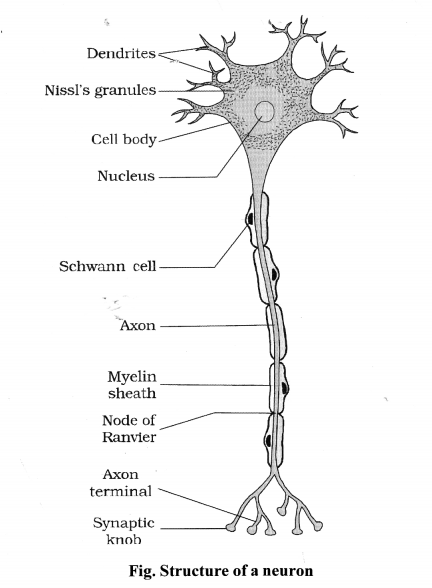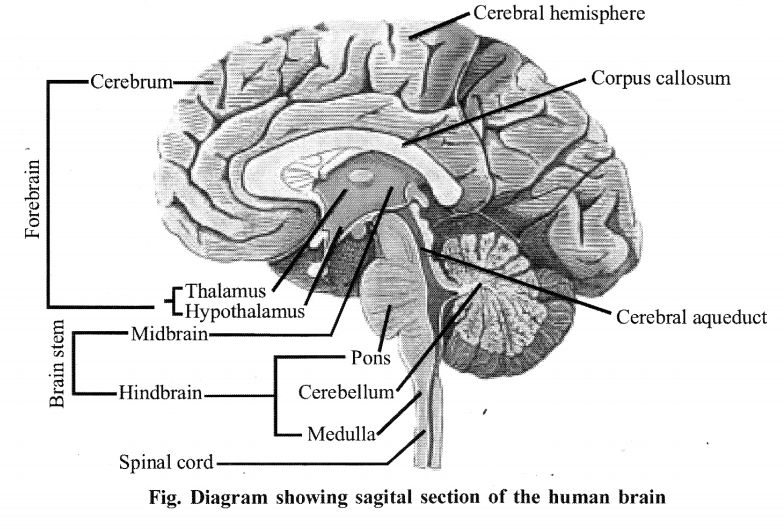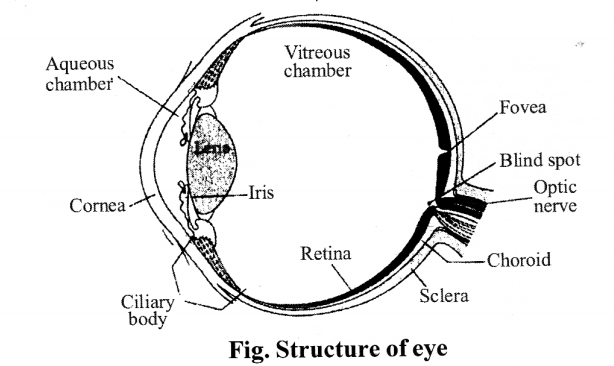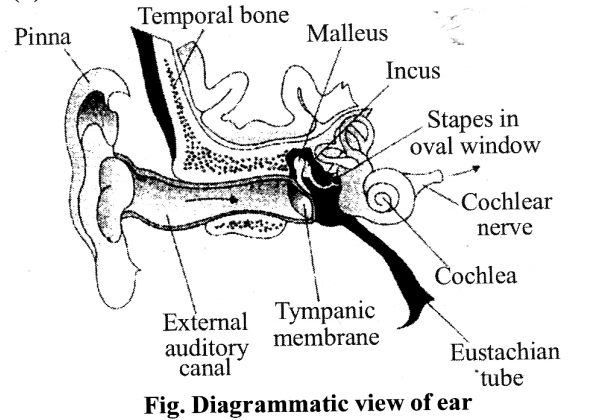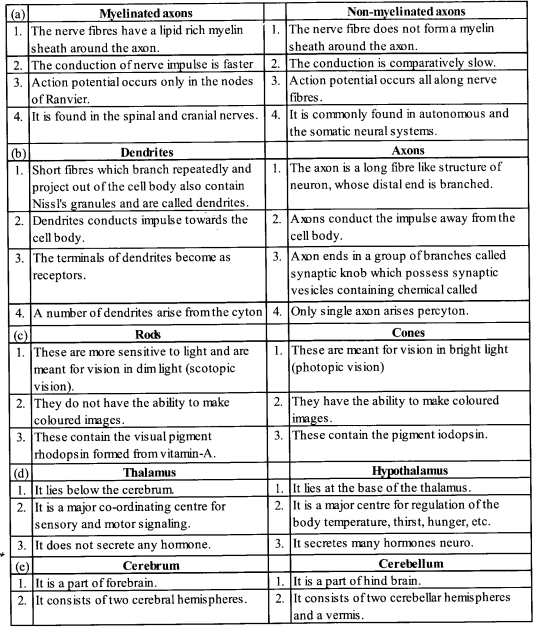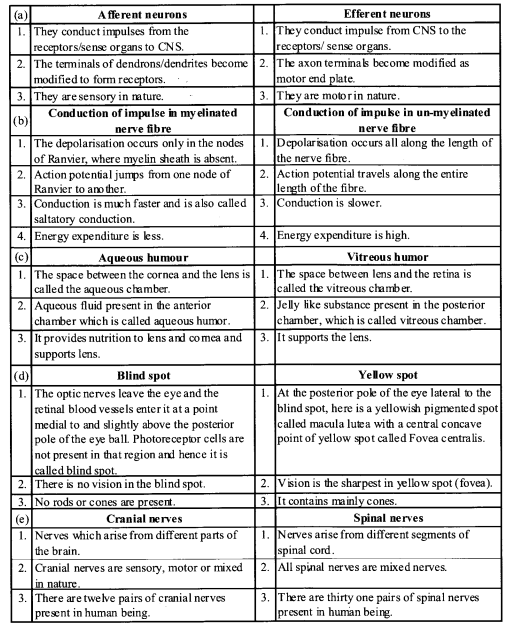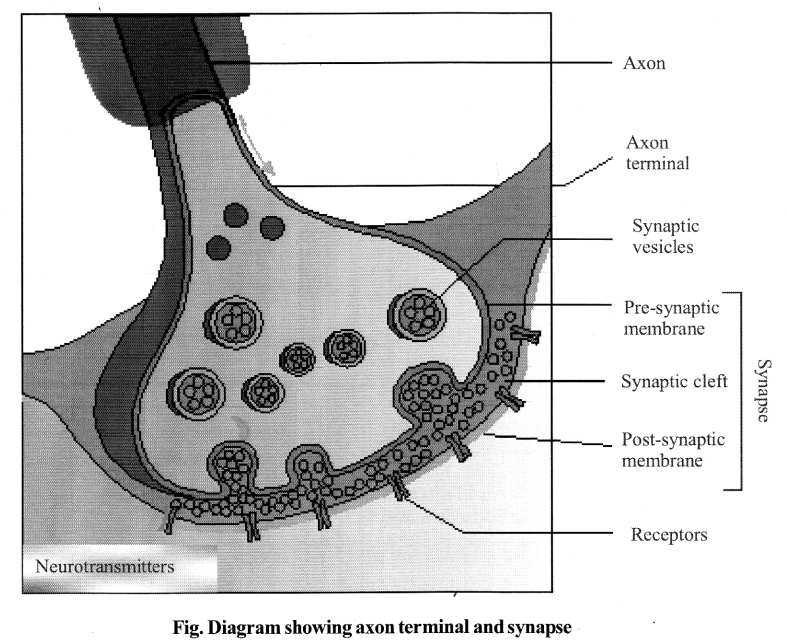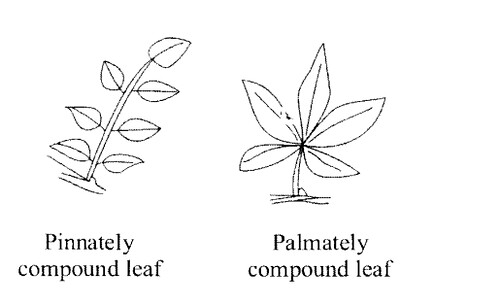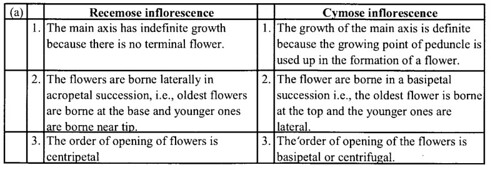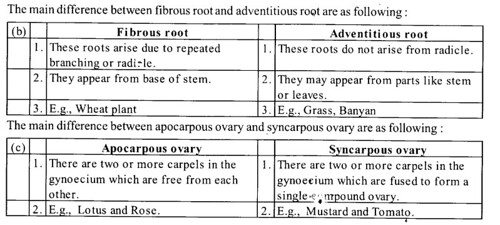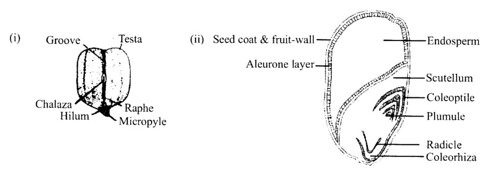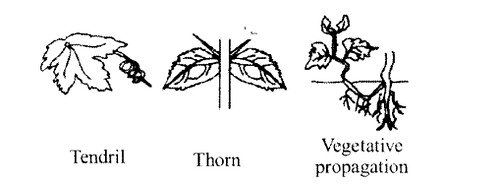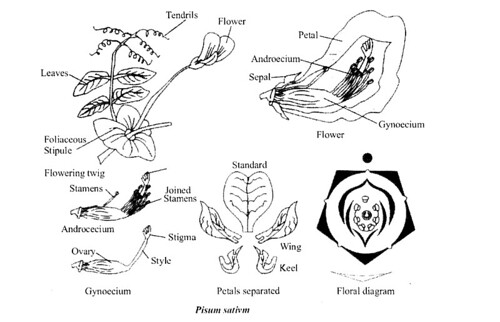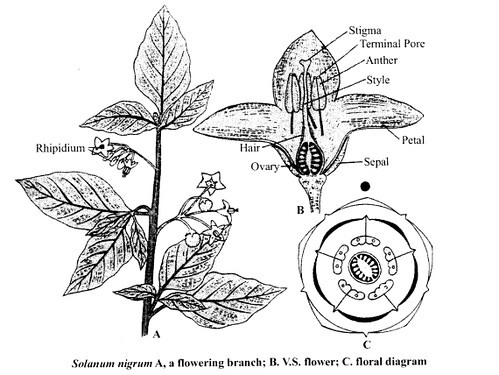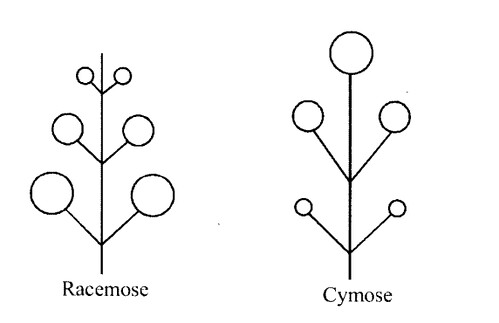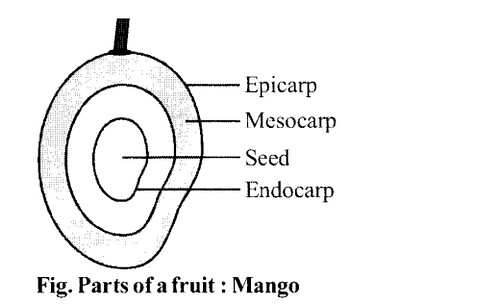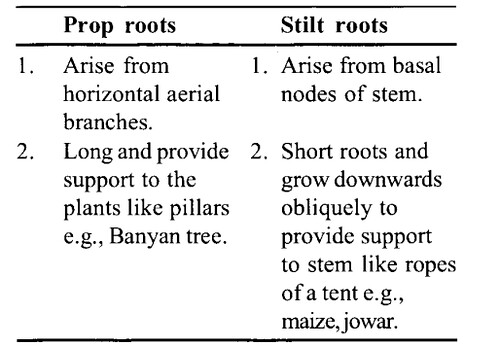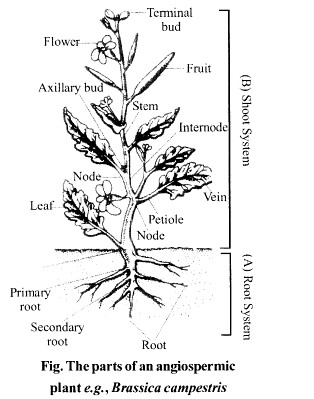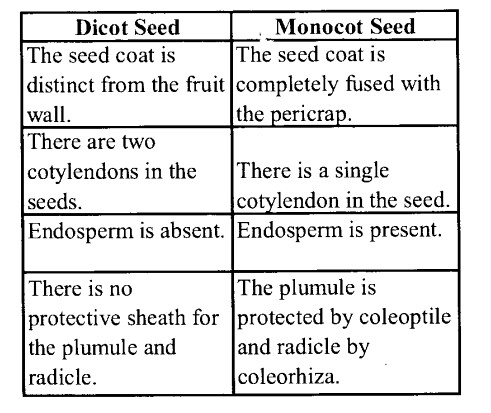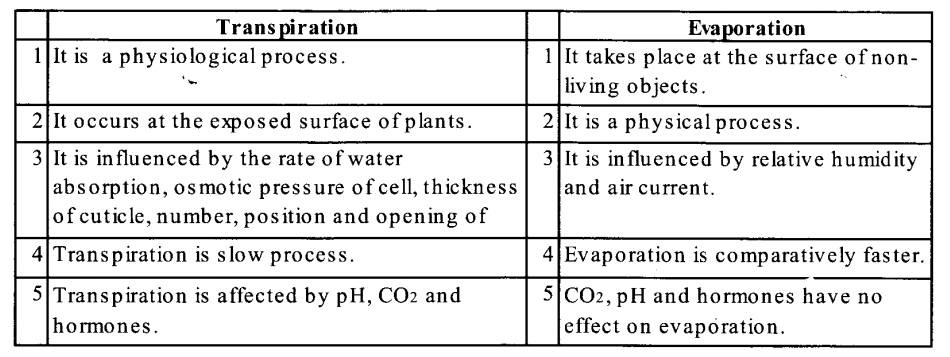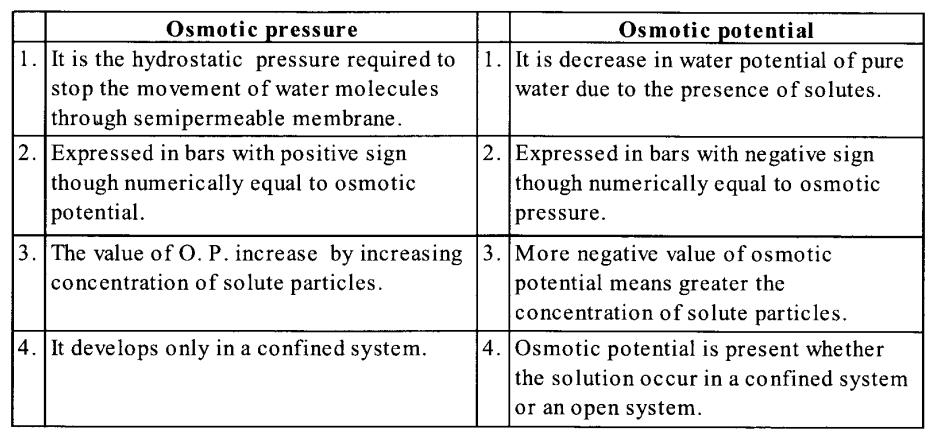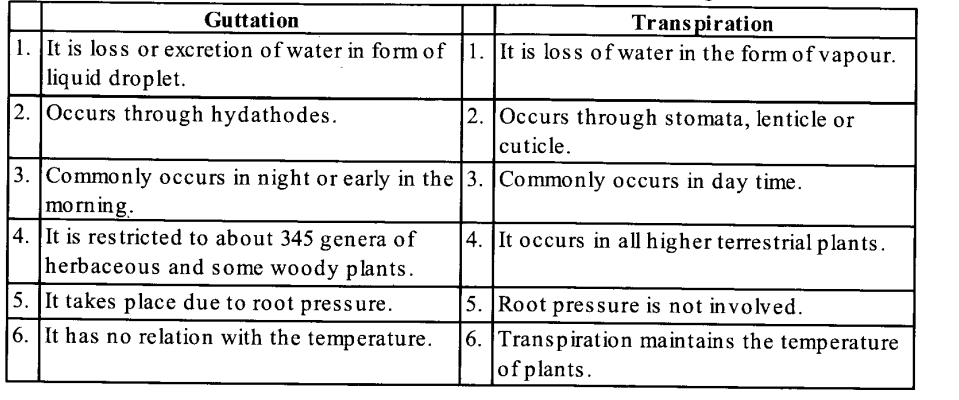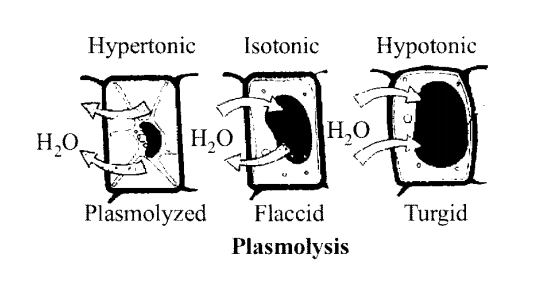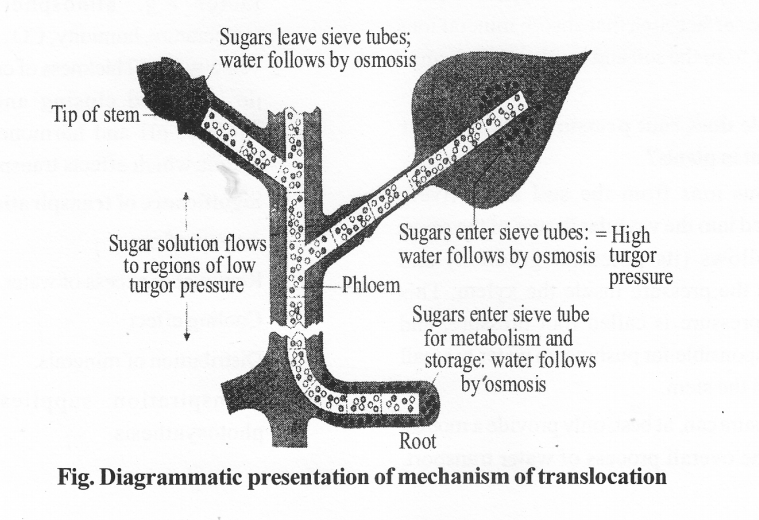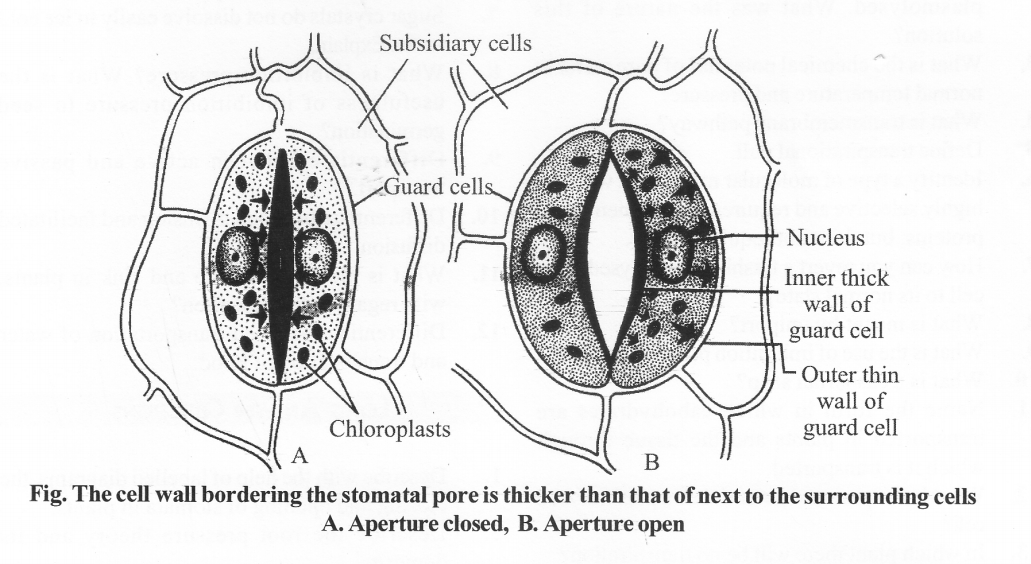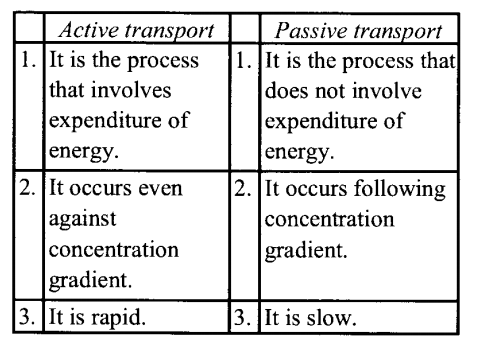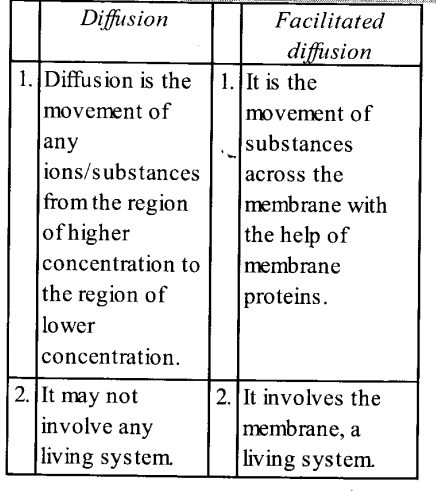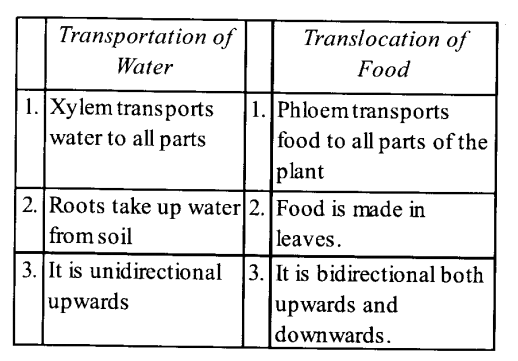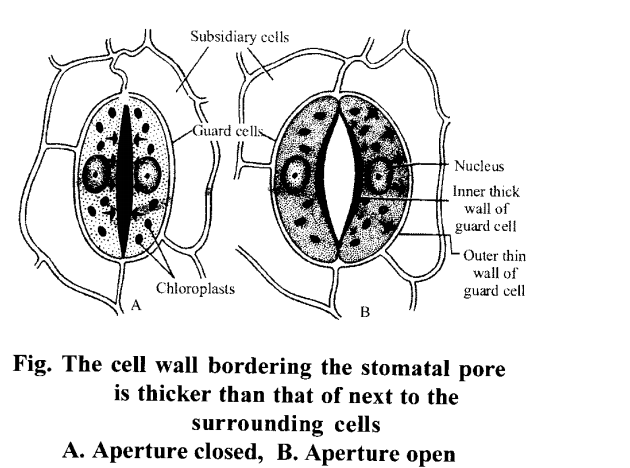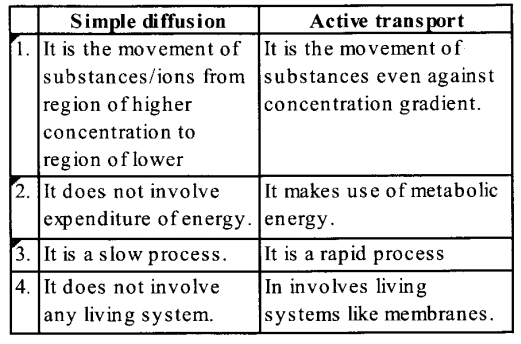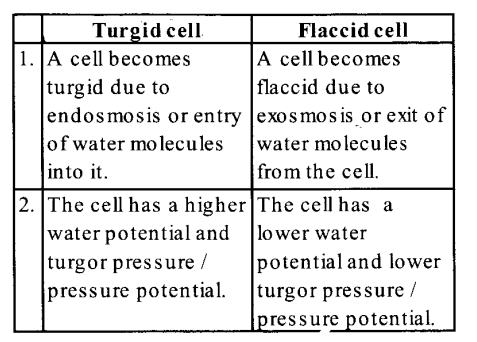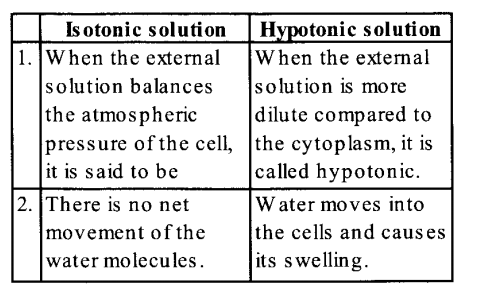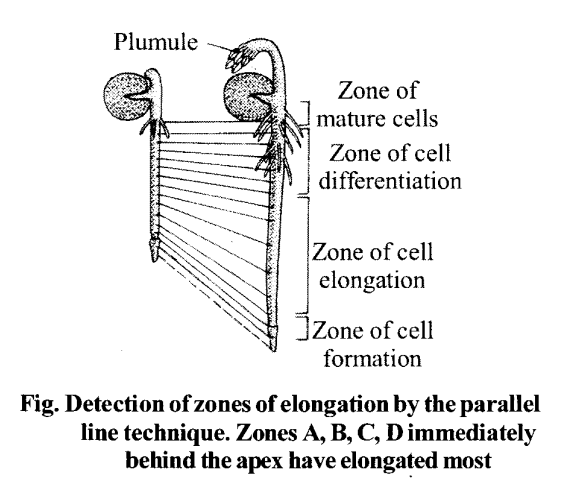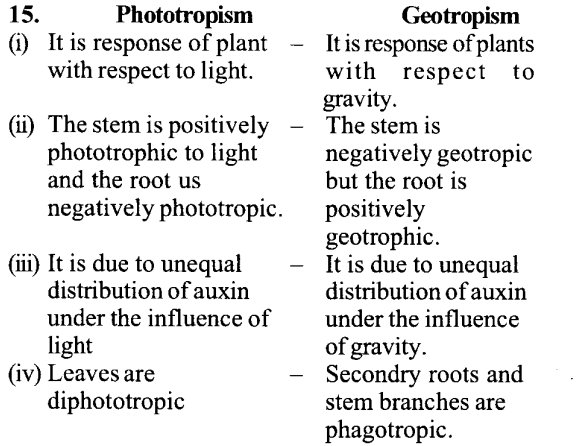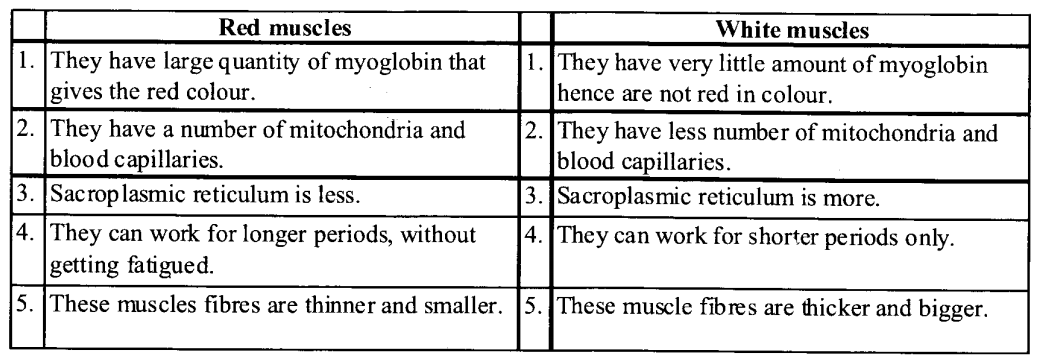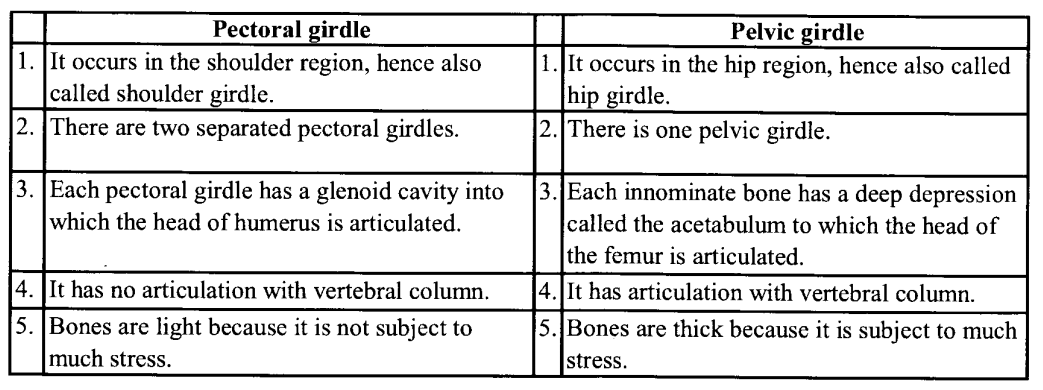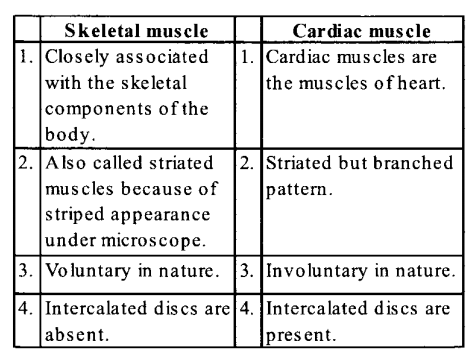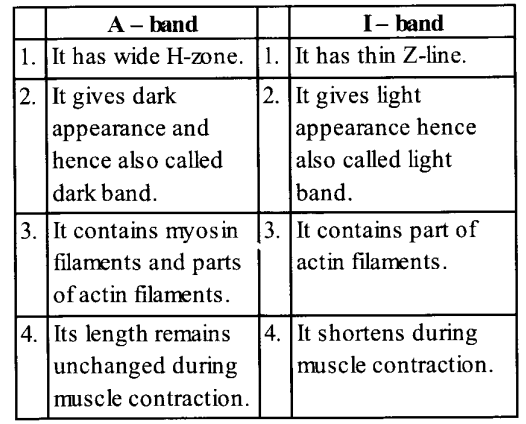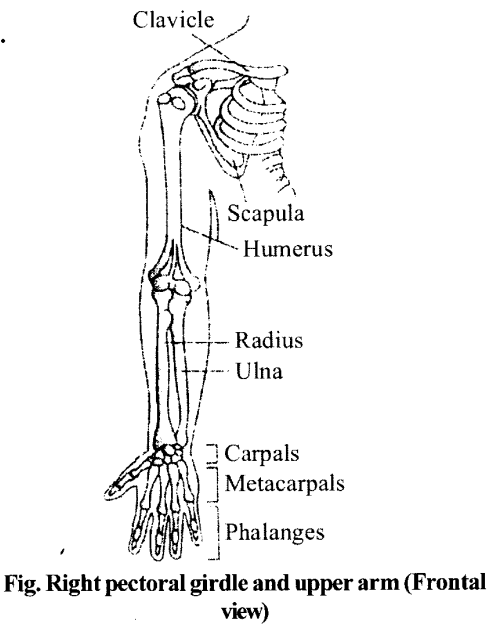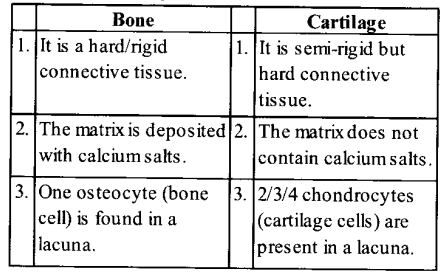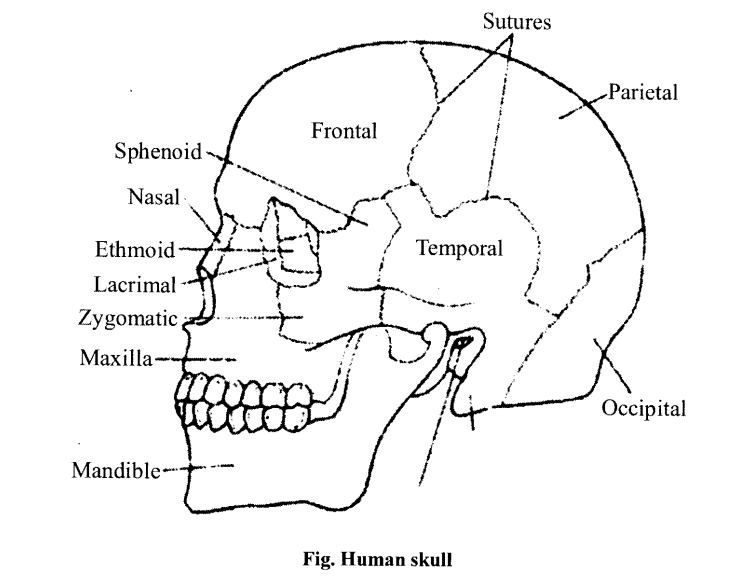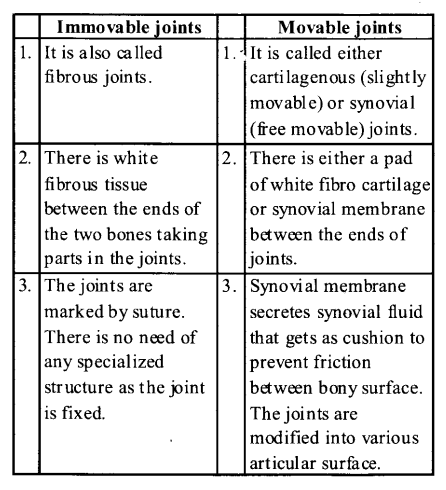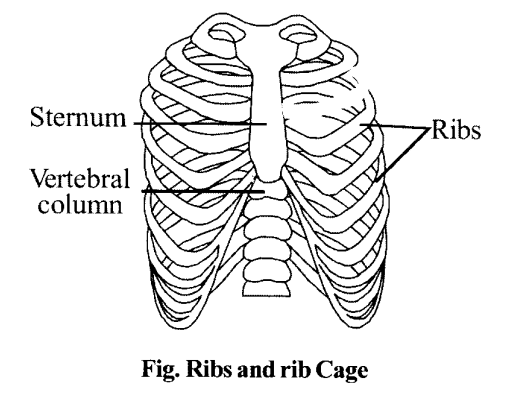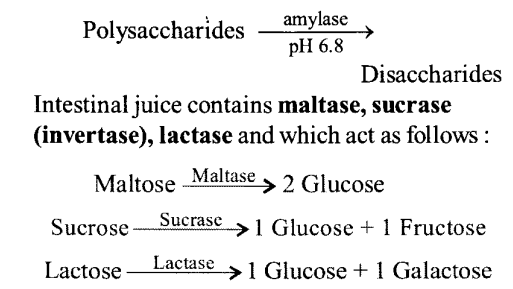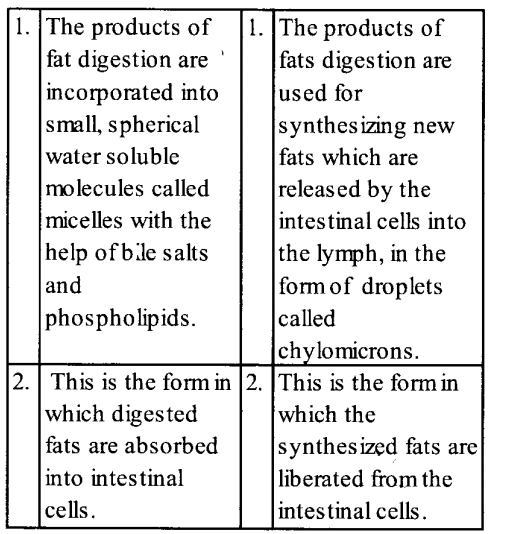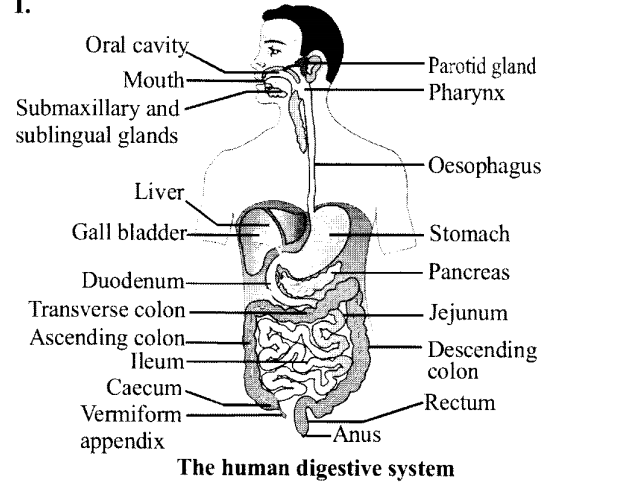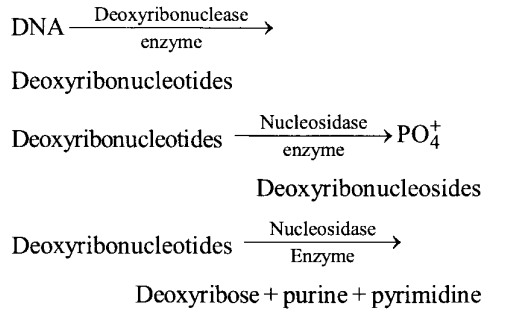NCERT Solutions for Class 11 Biology Chapter 9 Biomolecules
These Solutions are part of NCERT Solutions for Class 11 Biology. Here we have given NCERT Solutions for Class 11 Biology Chapter 9 Biomolecules.
Question 1.
What are macromolecules? Give examples.
Solution:
Biomolecules i.e. chemical compounds found in living organisms are of two types. One, those which have molecular weights less than one thousand and are usually referred to as macromolecules or simply as biomolecules while those which are found in the acid-insoluble fraction are called macromolecules or as biomacromolecules.
The molecules in the insoluble fraction with the exception of lipids are polymeric substances. Then why do lipids, whose molecular weights do not exceed 800, come under acid-insoluble fractions i.e., macromolecular fractions?
Question 2.
Illustrate a glycosidic, peptide and a phospho-diester bond.
Solution:
(a) Glycosidic bond: It is a bond formed between two monosaccharide molecules in a polysaccharide. This bond is formed between two carbon atoms of two adjacent monosaccharides.
(b) Peptide bond: Amino acids are linked by a peptide bond which is between the carboxyl (- COOH) group of one amino acid and the amino (- NH2) group of the next amino acid which is formed by the dehydration process.
(c) Phosphodiester bond: This is the bond present between the phosphate and hydroxyl group of sugar which is called an ester bond. As this ester bond is present on either side, it is called a phosphodiester bond.
Question 3.
What is meant by the tertiary structure of proteins?
Solution:
Tertiary structure of protein : When the individual peptide chains of secondary structure of protein are further extensively coiled and folded into sphere-like shapes with the hydrogen bonds between the amino and carboxyl group and various other kinds of bonds cross-linking on-chain to another they form tertiary structure. The ability of proteins to carry out specific reactions is the result of their primary, secondary and tertiary structure.
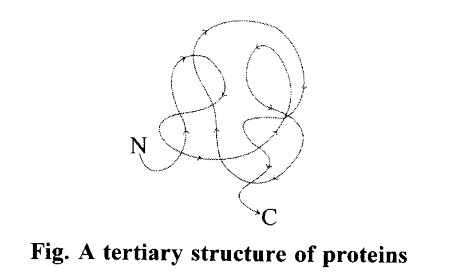
protein molecular weight calculator. Molecular mass is the most fundamental characteristics for proteins and peptides.
Question 4.
Find and write down structures of 10 interesting small molecular weight biomolecules. Find if there is any industry which manufactures the compounds by isolation. Find out who are the buyers?
Solution:
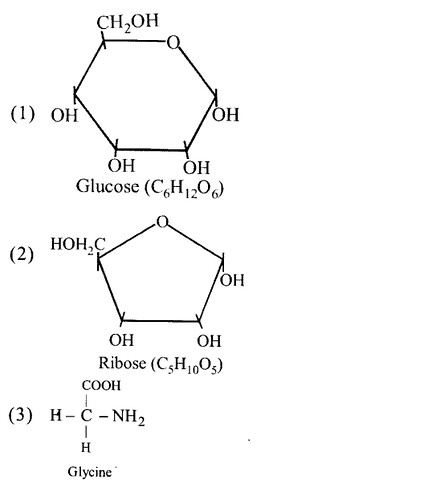
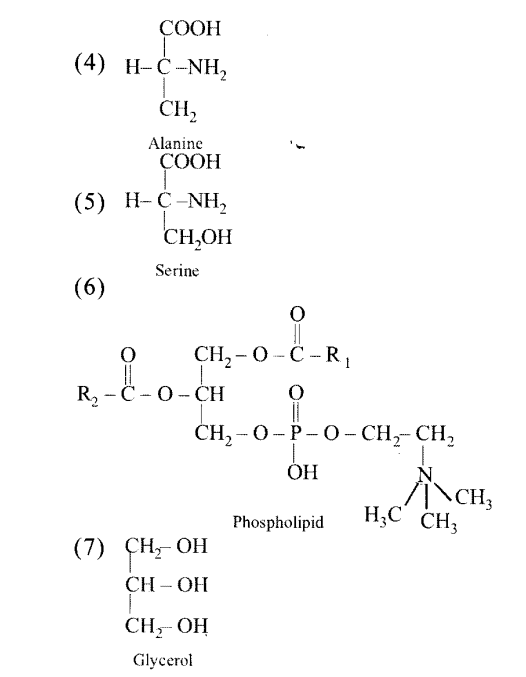
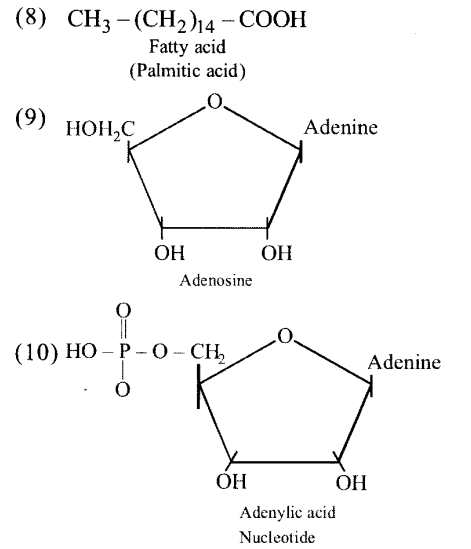
Fat is being manufactured by many companies in pharmaceuticals business as well as in food business. Vitamins come in many combination and are being used as supplementary medicines. Lactose is made by companies in manufacturing baby food. All of us are buyers of fat, protein and lactose.
Question 5.
Proteins have primary structures. If you are given a method to know which amino acid is at either of two termini (ends) of a protein, can you connect this information to purity or homogeneity of a protein?
Solution:
The primary structure of proteins is described as the type, number, and order of amino acids in the chain. A protein is imagined as a line whose left end represents the first and right end represents the last amino acid. But in fact, this is not so simple. Actually, the number of amino acids in between the two termini determines the purity or homogeneity of a protein.
Question 6.
Find out and make a list of proteins used as therapeutic agents. Find other applications of proteins (e.g., Cosmetics, etc.)
Solution:
Haemoglobin, Insulin, thyroxine, growth hormone, other hormones of the adenohypophysis, serum albumen, serum globulin, fibrinogen, etc. are used as the therapeutic agents. Proteins are also used for the synthesis of food supplements, film, paint, plastic, etc.
Question 7.
Explain the composition of triglyceride.
Solution:
Triglycerides are esters of three molecules of fatty acids and one molecule of glycerol.
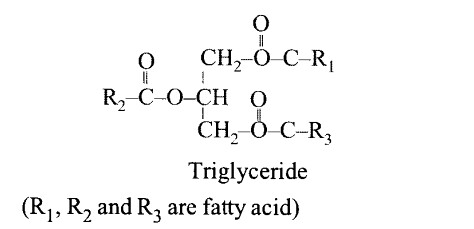
Question 8.
Can you describe what happens when milk is converted into curd or yoghurt, from your understanding of proteins.
Solution:
Conversion of milk into curd is the digestion of milk protein casein. Semi digested milk is the curd. In the stomach, renin converts milk protein into paracasein which then reacts with Ca++ ion to form calcium paracaseinate which is called the curd or yoghurt.
Question 9.
Can you attempt building models of biomolecules using commercially available atomic models (Ball and Stick model)?
Solution:
Yes, the Three-dimensional structure of cellulose can be made using balls and sticks. Similarly, models of other bimolecular can be made
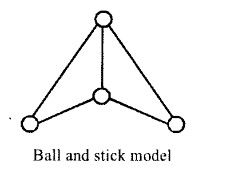
Question 10.
Attempt titrating an amino acid against a weak base and discover the number of dissociating (ionizable) functional groups in the amino acid.
Solution:
When an amino acid is titrated with weak base then its-COOH group also acts as weak acid. So it forms a salt with weak base then the pH of the resulting solution is near 7, so there is no sudden change. Number of dissociating functional groups are two, one is amino group (NH2) and another is carboxylic group ( – COOH). In the titration, amino acid acts as an indicator. Amino acids in solution acts as basic or acidic as situation demands. So these are also called amphipathic molecules.
Question 11.
Draw the structure of the amino acid, alanine.
Solution:
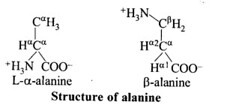
Question 12.
What are gums made of? Is fevicol different?
Solution:
Gums are categorized into secondary metabolites or biomolecules. Thousands of compounds one present in plant-fungal and microbial cells. They are derived from these things. But is different. Fevicol has not derived from paper written cells.
Question 13.
Find out a qualitative test for proteins, fats and oils, amino acid and test any fruit juice, saliva, sweat and urine for them.
Solution:
Qualitative Tests for proteins, amino acids, and fats:
Biuret Test: Biuret test for protein identifies the presence of protein by producing violet colour of solution. Biuret H2NCONHCONH2 reacts with copper ion in a basic solution and gives violet colour.
Liebermann-Burchard Test for cholesterol:
This is a mixture of acidic anhydride and sulphuric acid. This gives a green colour when mixed with cholesterol.
Grease Test for oil: Certain oils give a translucent stain on clothes. This tesi can be used to show presence of fat in vegetable oils. These tests can be performed to check presence of proteins and amino acids and fats in any of the fluid mentioned in the question.
Question 14.
Find out how much cellulose is made by all the plants in the biosphere and compare it with how much of paper is manufactured by man and hence what is the consumption of plant material by man annually. What a loss of vegetation?
Solution:
According to a 2006 report from the UN, forests store about 312 billion tons of carbon in their biomass alone. If you add to that the carbon in deadwood, litter, and forest soil, the figure increases to about 1.1 trillion tons! The UN assessment also shows that the destruction of forests adds almost 2.2 billion tons of carbon to the atmosphere each year, the equivalent of what the U.S. emits annually. Many climate experts believe that the preservation and restoration of forests offers one of the least expensive and best ways to fight against climate change.
Although it is difficult to get exact data about the quantum of cellulose produced by plants, but above information can give some idea. About 10% of cellulose is used in paper making. The percentage is less but wrong practice of cutting wood and re-plantation makes the problem complicated. Usually older trees are cut for large quantity of cellulose and re-plantation is limited to selected species of plants. Selected species disturb the biodiversity as it leads to monoculture.
Add to this the problem of effluents coming out of a paper factory and the problem further aggravates.
Question 15.
Describe the important properties of enzymes.
Solution:
Properties of enzymes
- Enzyme catalysis hydrolysis of ester, ether, peptide, c-c, c-halids, or P-N bonds.
- Enzymes catalysis removal of the group from the substrate by mechanisms other than hydrolysis of leaving double bonds.
- Enzymes generally function in a narrow range of temperature and pH.
- Activity declines both below and above optimum temperature and pH.
- The higher the affinity of the enzyme for its substrate the greater is its catalytic activity.
- The activity of an enzyme is also sensitive to the presence of specific chemicals that bind to the enzyme.
- For eg: Inhibitors that shuts off enzyme activity and Co-factors that facilitate catalytic activity.
- Enzymes retain their identity at the end of the reaction.
VERY SHORT ANSWER QUESTIONS
Question 1.
Which organic compound is commonly called animal starch?
Solution:
Glycogen
Question 2.
Name the biomolecules of life.
Solution:
Carbohydrates, Lipids, Proteins, Enzymes, and nucleic acids.
Question 3.
Name one basic amino acid.
Solution:
Lysine.
Question 4.
Name one heteropolysaccharide.
Solution:
Chitin
Question 5.
Name the biomolecules present in the acid-insoluble fraction.
Solution:
Protein, polysaccharide, nucleic acid, and lipids.
Question 6.
Name the bond formed between sugar molecules.
Solution:
Glycosidic bond.
Question 7.
Name three pyrimidines.
Solution:
Thymine, cytosine, and uracil
Question 8.
Which enzyme does catalyse covalent bonding between two molecules to form a large molecule?
Solution:
Ligases.
Question 9.
On reaction with iodine, starch turns blue-black, why?
Solution:
The appearance of blue colour with the addition of iodine is due to its reaction with amylose fraction of starch.
Question 10.
Which type of bonds are found in proteins and polysaccharides?
Solution:
Peptides bond in protein and glycosidic bonds in polysaccharides.
Question 11.
Name one neutral amino acid.
Solution:
Valine.
Question 12.
Where does histone occur?
Solution:
Chromosomes.
Question 13.
Name two different kinds of metabolism.
Solution:
Anabolism and catabolism.
SHORT ANSWER QUESTIONS
Question 1.
Which type of bonds are found in nucleic acids?
Solution:
Phosphodiester bond.
Question 2.
What are the monosaccharides present in DNA and RNA? (Chikmagalur 2004)
Solution:
Deoxyribose in DNA and Ribose in RNA.
Question 3.
What are fatty acids? Give two examples.
Solution:
Fatty acids are compounds which have a carboxyl group attached to an R-group, which could be a methyl (CH3), or ethyl (C2H5) group or a higher number of CH2 groups e.g., Linoleic acid, Palmitic acid.
Question 4.
What are co-enzymes? Give two examples.
Solution:
Coenzymes are the non-protein organic ^compounds bound to the apoenzyme in a conjugate enzyme, their association with the apoenzyme is only transient, e.g., Nicotinamide adenine dinucleotide (NAD). Flavin adenine dinucleotide (FAD), Nicotinamide adenine dinucleotide phosphate (NADP).
Question 5.
(i) What is meant by complementary base pairing?
(ii) What is the distance between two successive bases in a strand of DNA?
(iii) How many base pairs are present in one turn of the helix of a DNA strand?
Solution:
(i) Complementary base pairing is the type of
pairing in DNA, where a purine always pairs with a pyrimidine, i.e., adenine pairs with thymine (A=T) and guanine pairs with cytosine (G=C).
(ii) 0.34 nm or 34 A is the distance between two successive bases in the strand of DNA
(iii) 10 base pairs
Question 6.
Differentiate between DNA and RNA.
Solution:
The main differences between DNA add RNA are as following
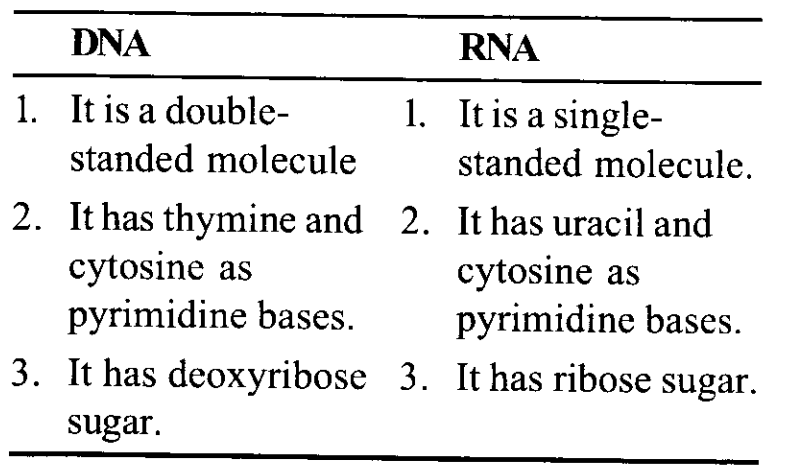
Question 7.
What la a prosthetic group? Give an example.
Solution:
The non-protein part of a conjugated protein is called a prosthetic group. For example in a nucleoprotein (nucleic acid is the prosthetic group).
Question 8.
Differentiate between essential amino acids and non-essential amino acids.
Solution:
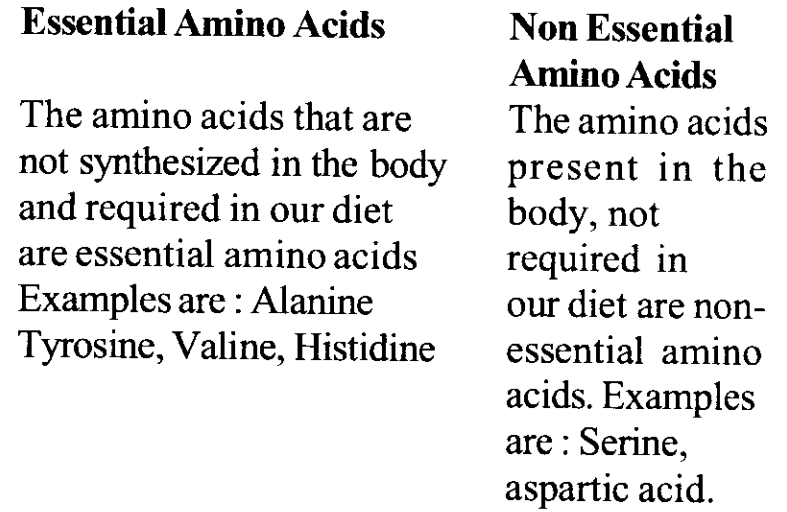
Question 9.
Differentiate between Structural Proteins and Functional Proteins.
Solution:
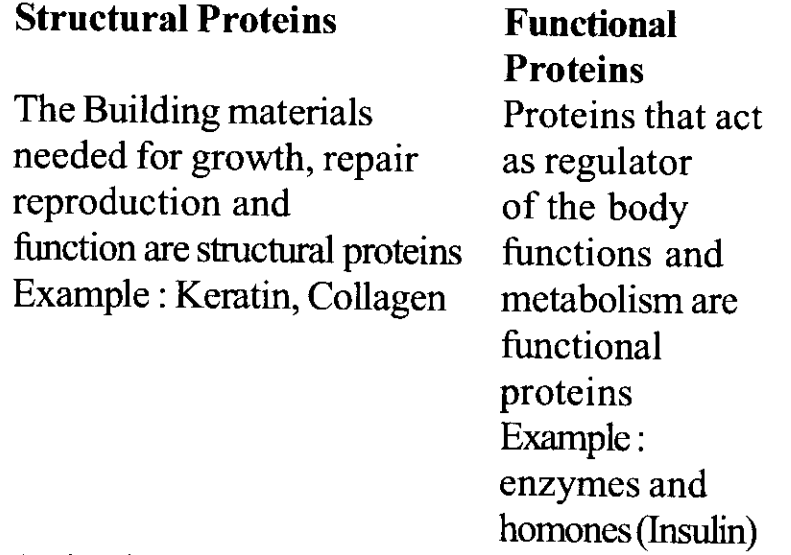
Question 10.
What is activation energy?
Solution:
Activation Energy: An energy barrier is required for the reactant molecules for their activation. So this energy with enzyme-substrate reaction is called Activation energy.
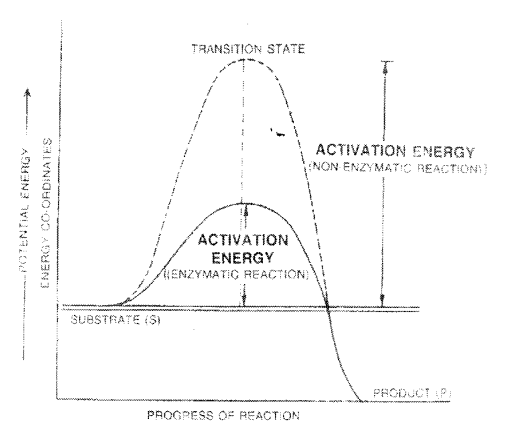
The activation energy is low for reactions with catalysts [enzymes] than those with Non enzymatic reactions.
Question 11.
What are the components of enzymes?
Solution:
Enzymes are made up of protein as well as non – protein parts. The protein part is called an apoenzyme and the non-protein part is a coenzyme. These two together are called a holoenzyme.
LONG ANSWER QUESTIONS
Question 1.
How many classes are enzymes divided into? Name all the classes.
Solution:
Enzymes are divided into 6 classes. Namely
- Oxidoreductases/dehydrogenases: Enzymes which catalyze oxidoreduction between two substrates
- Transferases: Enzymes catalyzing a transfer of group between a pair of substrates.
- Hydrolases: Enzymes catalyzing the hydrolysis of ester, ether, peptide, glycosidic, C-C-C-halide or P.N bonds.
- Lyases: Enzymes catalyze the removal of groups from – substrates by mechanisms other than hydrolysis leaving double bonds.
- Lyases: Enzymes catalyzing the interconversion of optical geometric or positional isomers.
- Ligases: Enzymes catalyzing the linking together of 2 compounds.
Question 2.
Distinguish between the primary, secondary, and tertiary structures of proteins.
Solution:
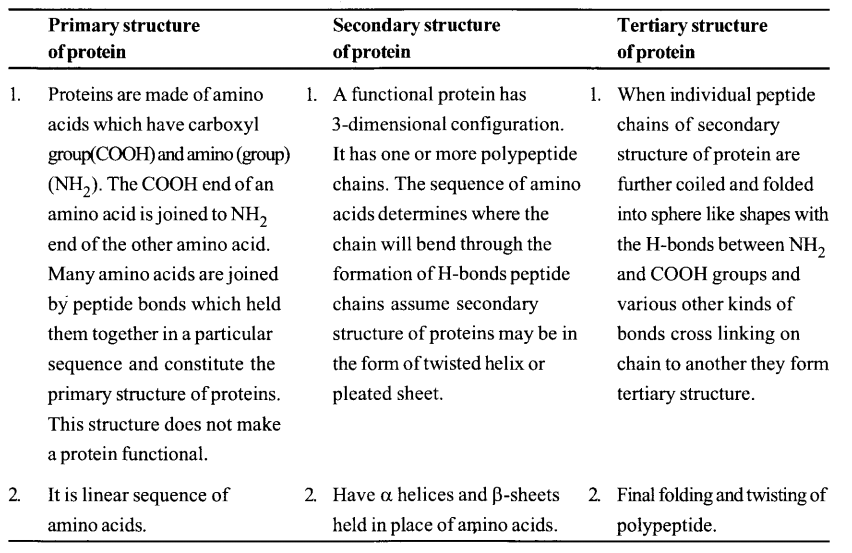
Question 3.
Explain the effect of the following factors on enzyme activity:
(i) Temperature
(ii) pH.
Solution:
Temperature: An enzyme is active within a narrow range of temperature. The temperature at which an enzyme shows its highest activity is called optimum temperature.
It generally corresponds to the body temperature of warm blood animals e.g., 37°C in human beings. Enzyme activity decreases above and below this temperature. Enzyme becomes inactive below minimum temperature and beyond maximum temperature.
Low temperature present inside cold storage prevents spoilage of food. High temperature destroys enzymes by causing their denaturation.
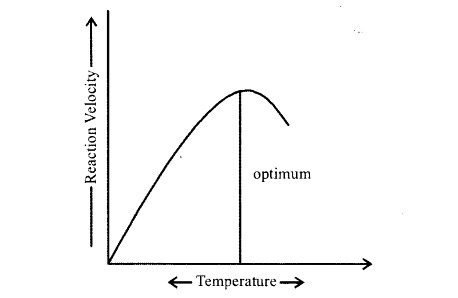
The relation between temperature and enzyme controlled reaction velocity
pH – Every enzyme has an optimum pH when it is most effective.
A rise or fall in pH reduces enzyme activity by changing the degree of ionisation of its side chains. A change in pH may also reverse the reaction.
Most of the intracellular enzymes function near-neutral pH with the exception of several digestive enzymes which work either in acidic range of pH or alkaline range of pH. pH for trypsin is 8.5.
Question 4.
Discuss the B-DNA helical structure with the help of a diagram.
Solution:
- Watson & Crick suggested the double-helical structure of DNA in 1953.
- The backbone of the DNA molecule is made up of deoxyribonucleotide units joined by a phosphodiester bond.
- The DNA molecule consists of two chains wrapped around each other.
- The two helical strands are bound to each other by Hydrogen Bonds.
- Purines bind with pyrimidines A = T, C = G
- The pairing is specific and the two chains are complementary.
- One strand has the orientation 5’ → 3’ and other has 3’ → 5’.
- Both polynucleotides strands remain separated with a 20A° distance.
- The coiling is right-handed.
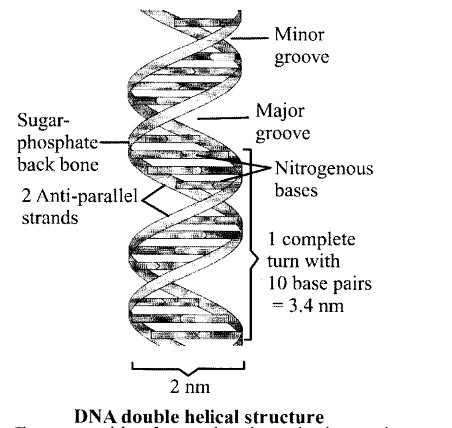
Question 5.
What are different kinds of enzymes? Mention with enzyme examples.
Solution:
Enzymes with substrate bonds are broken and changed to different kinds as
- Oxidoreductases: eg Alcohol dehydrogenase, oxidation, Reduction occurs
- Transferases: transfer a particular group to another substrate, eg. transavninase
- Hydrolases: cleave their substrates by hydrolysis of a covalent bond e.g. Urease, amylase.
- Lyases: break the covalent bond eg. Deaminase
- Isomerase: by changing the bonds they make isomers. eg: Aldolase.
- Ligase: These bind two substrate molecules eg: DNA ligase, RNA ligase
We hope the NCERT Solutions for Class 11 Biology at Work Chapter 9 Biomolecules, help you. If you have any query regarding NCERT Solutions for Class 11 Biology at Work Chapter 9 Biomolecules, drop a comment below and we will get back to you at the earliest.
